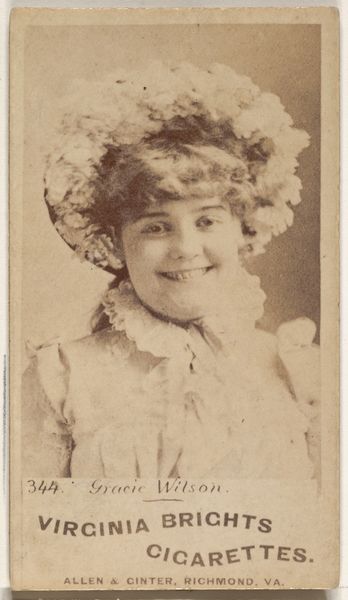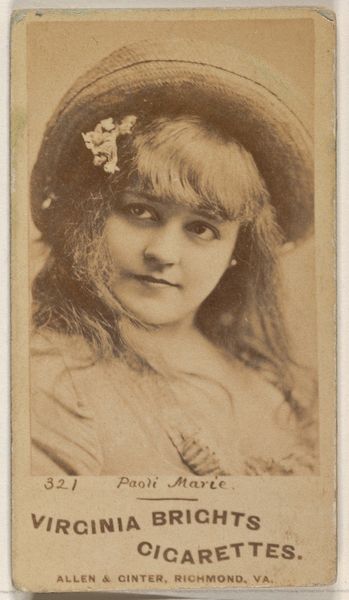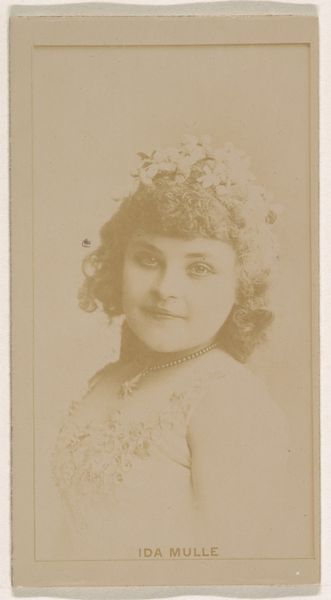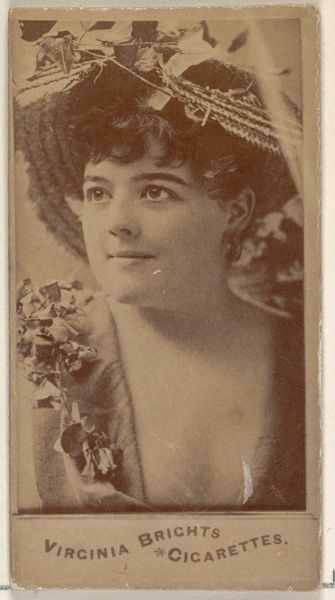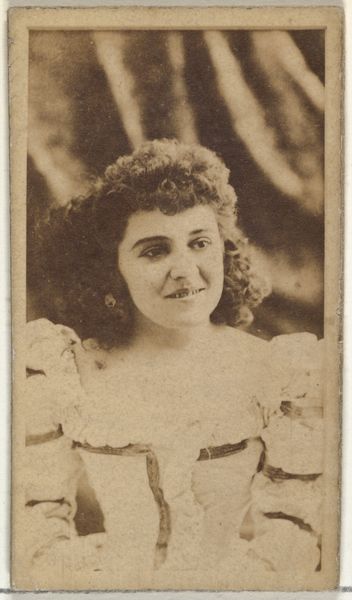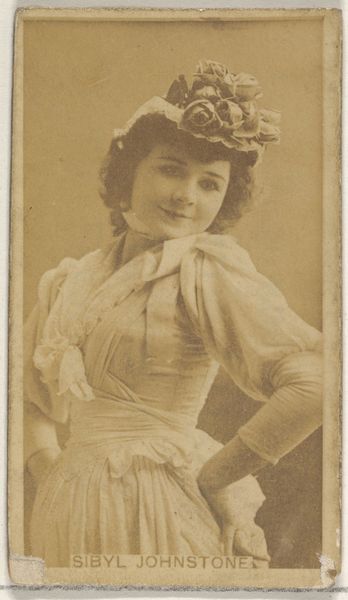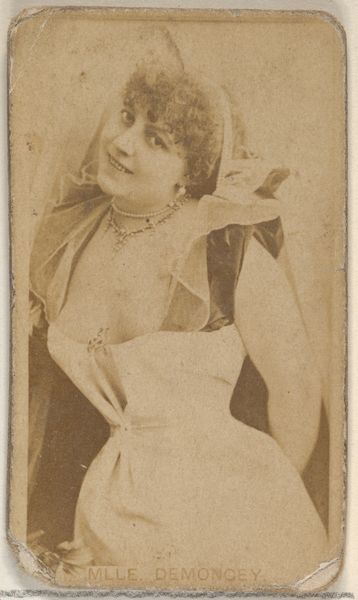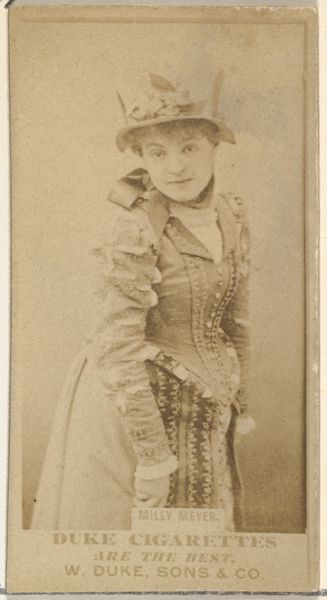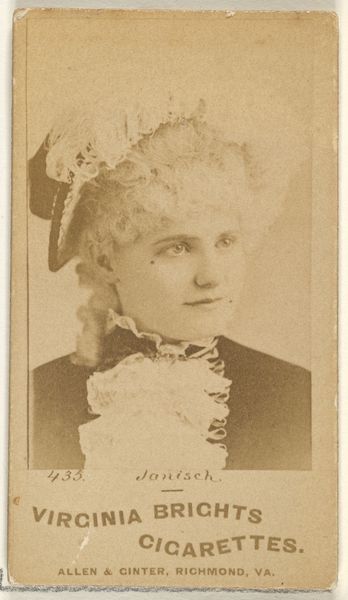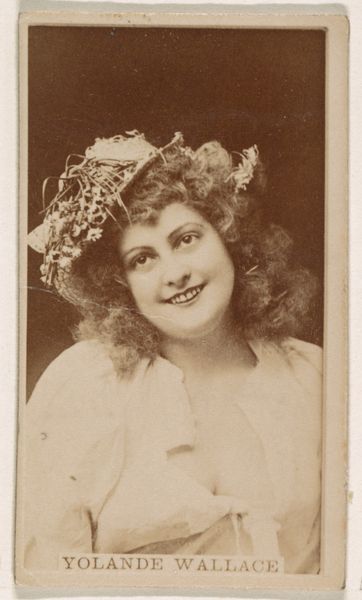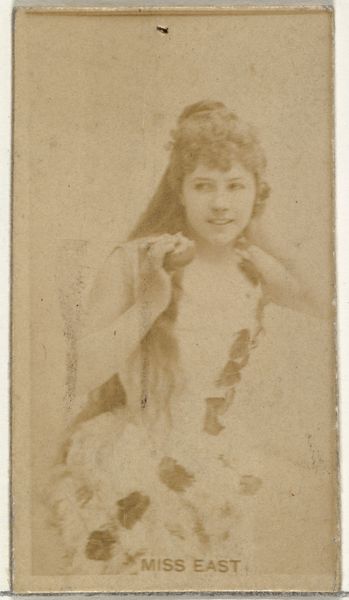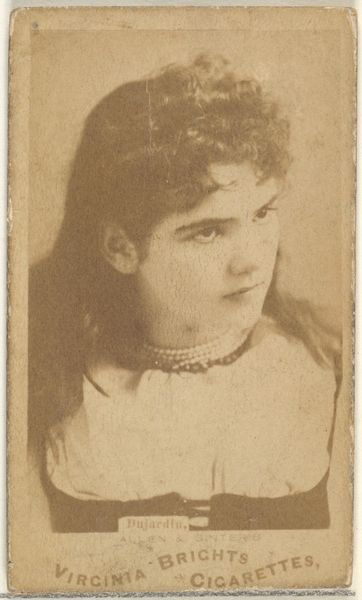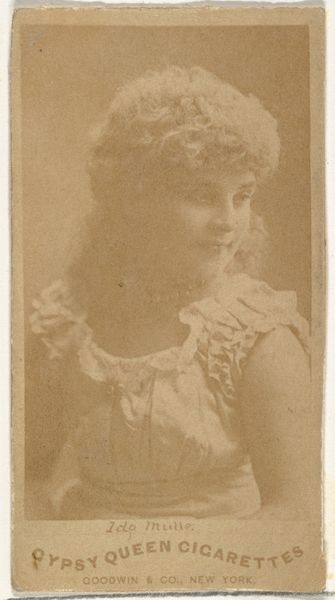
Madje Lessing, from the Actresses series (N245) issued by Kinney Brothers to promote Sweet Caporal Cigarettes 1890
0:00
0:00
drawing, print, photography, albumen-print
#
portrait
#
drawing
# print
#
photography
#
albumen-print
Dimensions: Sheet: 2 1/2 × 1 7/16 in. (6.4 × 3.7 cm)
Copyright: Public Domain
Curator: Here we have a portrait of Madje Lessing from Kinney Brothers Tobacco Company's "Actresses" series, dating back to 1890. It was issued to promote Sweet Caporal Cigarettes. Editor: She looks very young. I find it unsettling, the wide-eyed stare and coy smile against the backdrop of a commercial cigarette product. There's a forced innocence in her gaze. Curator: It's important to remember these weren’t created as high art but as commercial ephemera. Tobacco companies commonly used these types of cards, with celebrity portraits, to stiffen cigarette packs and encourage brand loyalty. These “Actresses” portraits exploited the glamour of the stage and linked it to the consumption of cigarettes, with their target market typically being young men. Editor: Exactly! That commodification of young, female performers…it speaks volumes about societal power structures at the time. How these images normalized certain standards of beauty and fame, while simultaneously pushing a product known to be harmful. Were these women aware of how they were being used in advertising, beyond just being paid? Curator: It's a complex question. While some actresses might have been simply contracted for their image, others could have actively participated, recognizing the exposure such endorsements offered. Still, the broader social context positioned women—especially those in the public eye—as objects of consumption, whether they intended it or not. The cards are albumen prints which were very common at that time and photography was a rapidly advancing medium. Editor: Absolutely, that tension is palpable in the portrait itself. The print's aged tone reinforces the sense of a bygone era, one that was overtly objectifying and manipulative of the nascent celebrity culture. Curator: Looking at this photograph allows us to scrutinize the role of advertising in shaping social values and gender roles. By understanding the historical context in which images like these were created and circulated, we can appreciate how they've contributed to contemporary discussions of gender, identity, and power in commercial messaging. Editor: And how the objectification and glamorization of unhealthy products through the representation of female images continue to this day. This little card offers us an uncomfortable but critical glimpse into the machinery of desire, identity and unhealthy habits.
Comments
No comments
Be the first to comment and join the conversation on the ultimate creative platform.
